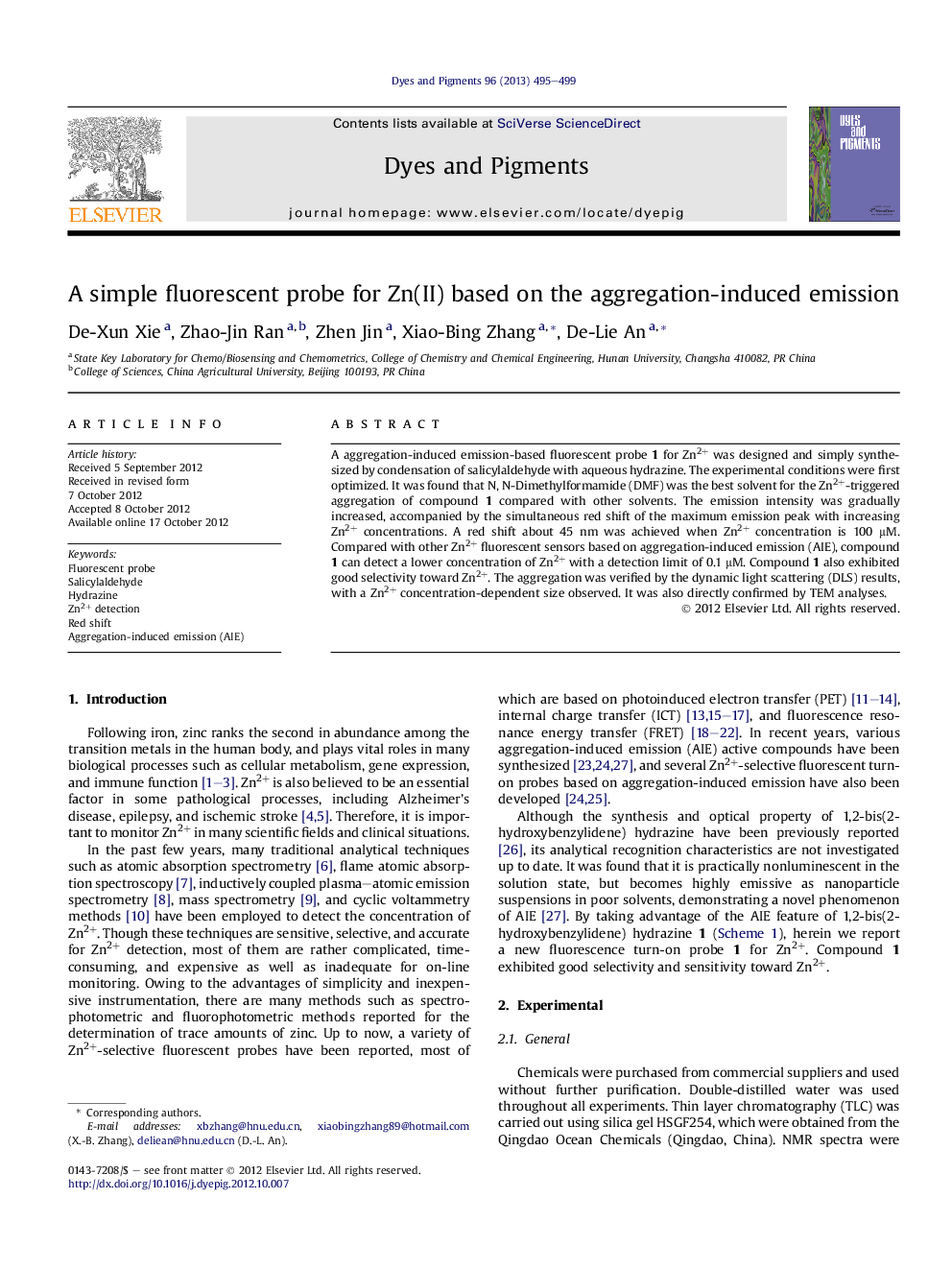| Article ID | Journal | Published Year | Pages | File Type |
|---|---|---|---|---|
| 176718 | Dyes and Pigments | 2013 | 5 Pages |
A aggregation-induced emission-based fluorescent probe 1 for Zn2+ was designed and simply synthesized by condensation of salicylaldehyde with aqueous hydrazine. The experimental conditions were first optimized. It was found that N, N-Dimethylformamide (DMF) was the best solvent for the Zn2+-triggered aggregation of compound 1 compared with other solvents. The emission intensity was gradually increased, accompanied by the simultaneous red shift of the maximum emission peak with increasing Zn2+ concentrations. A red shift about 45 nm was achieved when Zn2+ concentration is 100 μM. Compared with other Zn2+ fluorescent sensors based on aggregation-induced emission (AIE), compound 1 can detect a lower concentration of Zn2+ with a detection limit of 0.1 μM. Compound 1 also exhibited good selectivity toward Zn2+. The aggregation was verified by the dynamic light scattering (DLS) results, with a Zn2+ concentration-dependent size observed. It was also directly confirmed by TEM analyses.
► The sensing mechanism is different from most previously reported. ► Compound 1 is able to be synthesized with relative ease. ► Compound 1 exhibits high sensitivity and good selectivity toward Zn2+.
